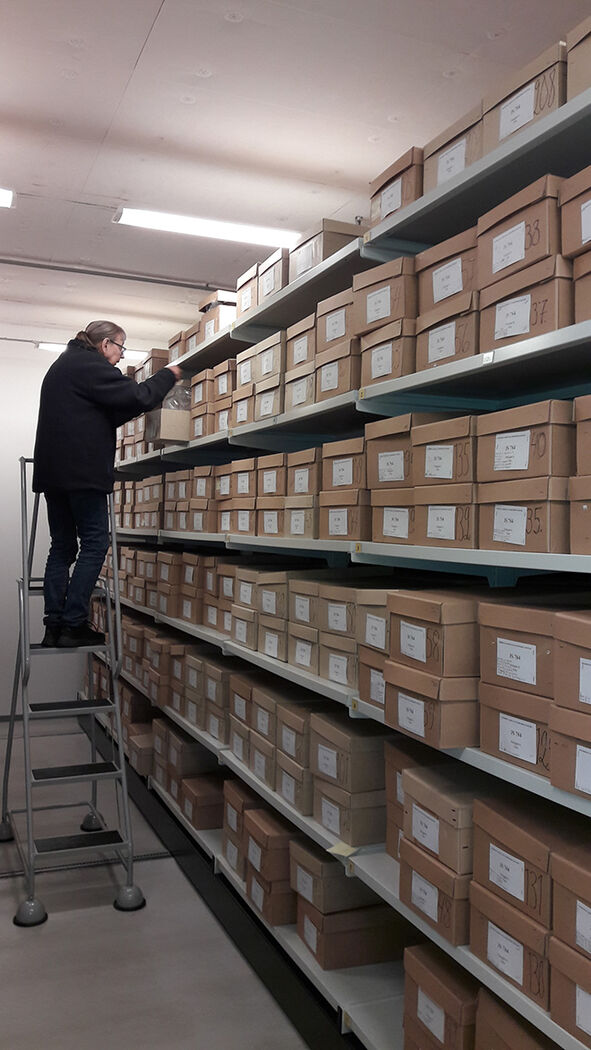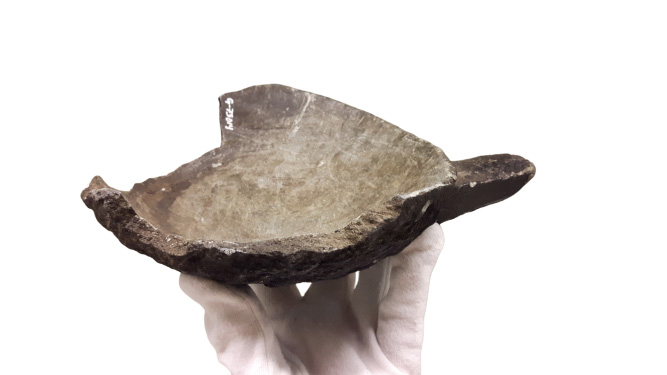Coopered vessels are wooden containers (buckets, tubs, vats, etc.) in varying sizes that have been used for storing different kinds of food. These containers consisted of a circular (sometimes oval) bottom plate with several carved and planed staves with a slight concave inside. These have been fastened around the edge of the bottom plate, and together they form the wall of the container. When the wood has swelled in water, the staves stand close together and the container becomes waterproof.
Coopered vessels could also have a couple of elongated staves for fastening handles in or the lid. Around the wall there could be a hoop or two, with the end twisted around the root end, keeping itself, and thereby the staves, in place.








